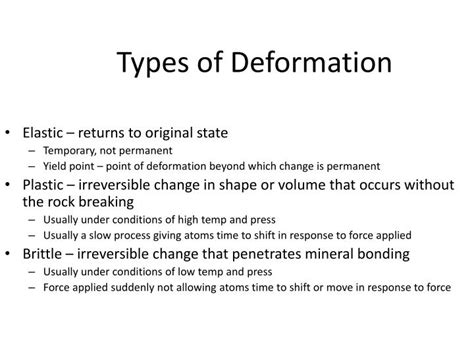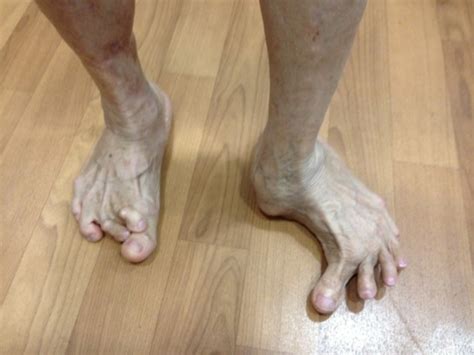sheet metal deformation Deformation processes transform solid materials from one shape into another. The initial shape is usually simple (e.g., a billet or sheet blank) and is plastically deformed between tools, or dies, . Learn how Liz creates her famous teacup sketches and then apply the techniques to sketching teacups in your own style. Level 1 Course: Complements Foundations and Watercolour. Liz is an obsessive sketcher from Sydney Australia who sketches her life and shares the experience.
0 · types of deformation processes
1 · repair some deformations
2 · mechanical properties of metals table
3 · mechanical properties of metal materials
4 · mechanical properties of a metal
5 · deformation vs deflection
6 · deformation equation mechanics of materials
7 · 2 types of deformation
IP67 rated enclosures designed for use with control switches and equipment. Available box materials include robust ABS plastic or flame retardant Polycarbonate.
types of deformation processes
Sheet metal forming processes involve a great deal of plastic deformation; these processes include: bending, deep drawing (with a flat-headed punch), stretch forming, and general sheet forming (Mellor & Parmar, 1978).In ISF, flat metal sheets are incrementally deformed into complex three .The various deformation behaviors, in metallic materials, may be represented .Deformation processes transform solid materials from one shape into another. The initial shape is usually simple (e.g., a billet or sheet blank) and is plastically deformed between tools, or dies, .
In ISF, flat metal sheets are incrementally deformed into complex three-dimensional components using a computer numerically controlled (CNC) generic tool that acquires the target profile by . What makes a flat sheet of metal transform into complex shapes with precision and accuracy? The answer lies in the intricate deformation process of sheet metal bending. This article dives into the mechanics of how metal .
china waterproof distribution box factory
Forming of sheet metal into finished shapes involves the plastic deformation of the material by bending, stretching and drawing. Shapes are also produced by shearing sections from a plate (blanking).statement of the basic laws governing deformation in sheet metal and the application of large modelling packages. This book is aimed directly at this middle ground. At the one end, it .Sheet metal forming: The products made by sheet metal forming processes include a large variety of shapes and sizes, ranging from simple bends to double curvatures with shallow or deep . The various deformation behaviors, in metallic materials, may be represented by the following six deformation models: (a) linear elastic, (b) linear elastic/plastic, (c) .

Mechanics of Sheet Metal Forming. By Prof. R Ganesh Narayanan | IIT Guwahati. Learners enrolled: 1252 | Exam registration: 131. ABOUT THE COURSE: Sheet metal forming . In sheet metal stretch forming, deformation instability is mainly in the form of shearing; in the extrusion or stamping forming, the deformation instability is mainly in the form of wrinkling. Shear instability and wrinkling can both cause many problems, such as easy corrosion, easy damage, and difficult assembly [ 114 ].
3.1 Plane Stress and Membrane Stresses. Sheet metal forming processes involve a great deal of plastic deformation; these processes include: bending, deep drawing (with a flat-headed punch), stretch forming, and general sheet forming (Mellor & Parmar, 1978).Most of these sheet forming process, in general, are in the state of plane stress, i.e., the stress, normal to .Shear-dominated deformation (SHDD) is pivotal in sheet metal forming; however, comprehensive modeling of plastic anisotropy in SHDD, specifically shear anisotropy considering both yield stress and plastic flow, has been inadequately addressed in existing literature. In this work, a generalized constitutive framework is introduced on the basis . Optimal clearance and shear angles reduce the deformation of the sheet metal and the force required for cutting. 8. Lubrication: The use of lubricants during the shearing process can reduce friction between the sheet metal and the cutting tool, thereby lowering the shearing force required. Lubrication also helps improve the surface finish of . In sheet metal stretch forming, deformation instability is mainly in the form of shearing; in the extrusion or stamping forming, the deformation instability is mainly in the form of wrinkling. Shear instability and wrinkling can both cause many problems, such as .
Laser cut sheet metal is a popular material in many industries due to its durability, strength, and versatility. At SendCutSend, we stock multiple high-quality materials and offer CNC bending services so your project is limited only by imagination (and a few pesky rules of physics). In this guide, we’ll discuss ways to accommodate those rules so you can avoid deformation in .
Laser shock forming (LSF) is a novel sheet forming technology that sheet deformation induced by shock wave is accomplished in the level of nanoseconds, and the shocked material strain rate goes up to 10 6 s −1, so it can be served as an alternative process to improve formability of metal material at room temperature.Up to now, many attempts have .
The laws of physics must be maintained, even with sheet metal deformation. A unit of material must maintain a constant volume before, during and after forming. This allows calculation of the thickness strain (et), as the major strain (eMa), minor strain (eMi) and thickness strain in that unit of material multiplied together must equal 1: The method combines the concepts of ECAP and Conform extrusion, and is intended for processing sheet-metal workpieces. A metal strip is introduced into the deformation zone through the gap between the main roll and the feed rolls and then it passes through the channel with a specific angle Φ between the upper and lower die.Sheet Metal Forming: Fundamentals describes the changes that occur in sheet metals during forming operations and explains how to model and analyze them using computational techniques. It begins with a review of sheet forming practices followed by an in-depth discussion on the fundamentals of plastic deformation and its role in the forming process.
repair some deformations
You can model features in the Sheet Metal environment that are manufactured with metal deformation techniques, such as deep drawing and coining. When parts are manufactured using deformation techniques, material thinning typically occurs. In Solid Edge, this material thinning is ignored and deformation features are constructed using the same . 11. Sheet Metal operations Introduction Sheet metal formingis a grouping of many complementary processes that are used to form sheet metal parts. One or more of these processes is used to take a flat sheet of ductile metal, and mechanically apply deformation forces that alter the shape of the material. Before deciding on the processes, one should determine .
Sheet Metal Deformation Or Forming Sheet Metal. Deformation or forming involves transforming the sheet metal into different shapes and designs. Again, there are various techniques you will use, such as: Sheet Metal Bending Process . Sheet metal bending is the plastic deformation of a workpiece over a specific axis. As a result, it changes the . A novel experimental technique, that combines high-speed imaging and digital image correlation techniques, has been developed and applied to investigate the high-rate deformation behavior of aluminum sheet during electro-hydraulic forming (EHF). Aluminum alloy AA5182-O sheets (1 mm thick and ∼152 mm diameter) were EHF deformed by high-energy . Abstract The precise bending of sheet metal structures is crucial in various industrial and scientific applications, whether to modify deformation in an existing component or to achieve specific shapes. Laser peen forming (LPF) is .While bulk deformation and sheet metal forming share the common goal of shaping metal, they differ in several key aspects. Firstly, the starting materials used in the two processes are different. Bulk deformation primarily deals with large volumes of metal, such as billets or ingots, while sheet metal forming focuses on thin sheets or coils.
Very close emboss to the part edge can lead to deformation in the sheet metal part. A – Distance From Emboss To part Edge = 3T + D/2. B- Distance Between Two Emboss = (5 + D) C- Distance between Emboss and Sheet Metal bend = . Multi-step electromagnetic forming is a novel sheet metal forming approach which makes use of electromagnetic force acting on sheet metal incrementally to cause local deformation and further accumulate a final shape. The effects of process configurations including incremental interval and discharge voltage as well as sheet thickness on the radius of .
Deformation features: Deformation features are present in constant thickness part models, as a result of deformation of material, as forming of material to obtain sheet-metal parts.Features in a sheet metal are also referred to as constant thickness features [2], [3], [6], [7]. In this paper, the term deformation feature is used to refer features in a sheet metal part.
This paper presents the deformation of a joined sheet after the clinch riveting process. The DX51D steel sheet with zinc coating was used. The samples to be joined with clinch riveting technology had a thickness of 1 ± 0.05 mm and 1.5 ± 0.1 mm. The sheet deformation was measured before and after the joining process. The rivet was pressed in the sheets with the . This provides engineers and researchers with an intuitive means of analyzing and diagnosing the deformation process during sheet metal forming . In general, they can be approximately classified as acoustic emission (AE) technique, thermal infrared testing method, ultrasonic method, resistance method, etc. The AE technique, .
The tension test of a metal involves deformations in two stages: (a) elastic deformation and (b) plastic deformation (see Fig. 2.3).Elastic deformations are reversible, i.e., the energy expended in deformation is stored as elastic strain energy and is completely recovered upon the removal of load. On the other hand, plastic deformations are irreversible . In this research, the embossing of microchannels is conducted to study the microscale deformation behavior of sheet metal. It is found that the surface roughness increases with strain and the variation rate increases with the grain size. The phenomenon results from the deformation incompatibility among grains with different properties in . In this research, the embossing of microchannels is conducted to study the microscale deformation behavior of sheet metal. It is found that the surface roughness increases with strain and the variation rate increases with the grain size. The phenomenon results from the deformation incompatibility among grains with different properties in .
mechanical properties of metals table
The K-factor in sheet metal bending represents the ratio between the thickness of the metal and an invisible line called the “neutral axis.” When a flat piece of material is bent the inside face of the bend is compressed and the outside part stretches. . This deformation of the material creates a thinning effect in the middle of the bend .
To avoid the problem of deformation in flat plate sheet metal under force through design optimization, the following methods can be adopted: Add reinforcement ribs: By adding reinforcement ribs in the sheet metal part, the strength and rigidity of the sheet metal part can be improved. This method is simple and effective, and is suitable for .
mechanical properties of metal materials

Discover our series of elegant and reliable Dahua waterproof junction boxes designed to enhance your camera installations. Crafted from sturdy aluminum, these junction boxes are as aesthetically pleasing as they are functional.
sheet metal deformation|repair some deformations